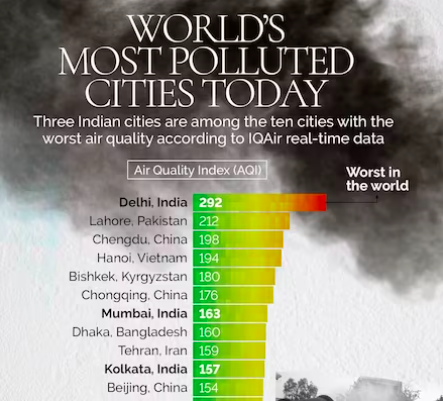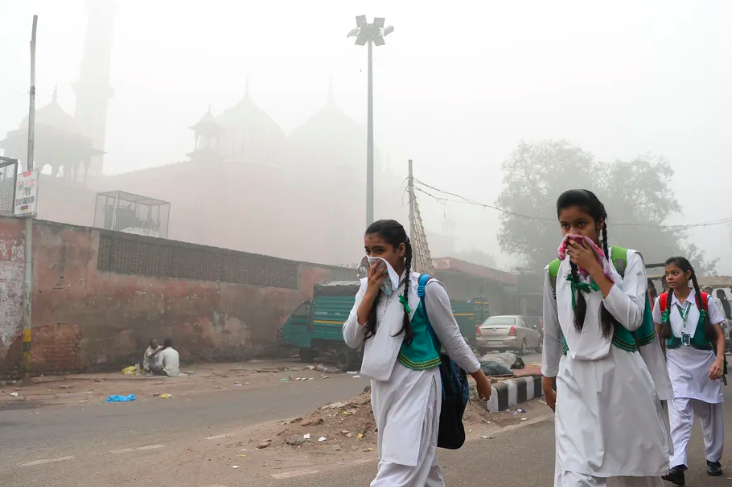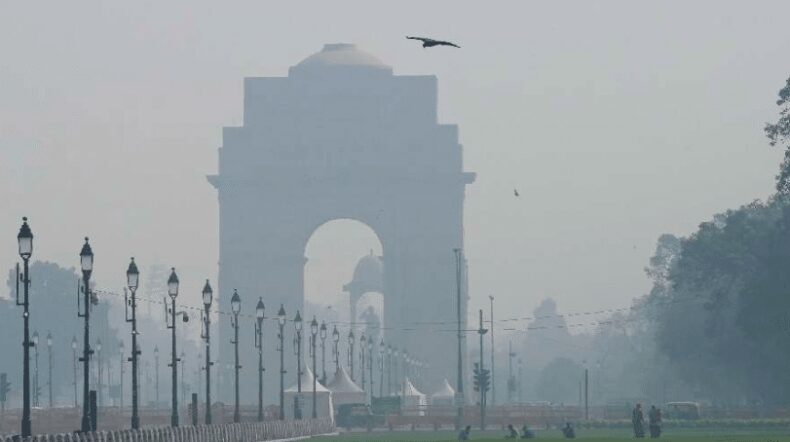Delhi For years, air pollution has been in the news, and the situation only gets worse as winter approaches. Additionally, everyone who is breathing that air is failing, not just the government.

According to the Central Pollution Control Board, the Air Quality has gotten so bad that it is now in the “severe” category on the Air Quality Index. It is 400+ across virtually all of Delhi and 450+ in a few places.
Delhi, which has long been one of the world’s most polluted cities, has suddenly become a gas chamber. Its weather patterns, industrial emissions, vehicle emissions, the burning of crop residue, etc. are all caused by a variety of reasons.
And the governments of Delhi and the nation at large are pointing the finger at one another.
Since the beginning of November, when paddy crop leftovers in Punjab were burned, the air in Delhi NCR has been poisonous, with a PM 2.5 concentration of about 500 ug/m3.
Lung cancer and pulmonary cardiovascular diseases are brought on by both short- and long-term exposure to it, according to a 2013 World Health Organization report.
In a recent report from the Center for Science and Environment, a Delhi-based organization that conducts environmental research and analyzes data relating to air pollution in the Delhi-NCR region, It was discovered that burning crop residue and vehicle pollutants are to blame for a major portion of Delhi’s pollution.
About 32% of PM 2.5 is released during the burning of biomass, with about 50% coming from vehicle emissions. The proportion of farm fires is at its greatest level in the previous two years.
PM 2.5 is a term used to describe tiny particles that can enter the respiratory system, lungs, and bloodstream that have a diameter of 2.5 microns or less.
What is the Air Quality Index?
The AQI is an index that provides daily reports on Air Quality. The Environmental Protection Agency bases its calculation on five significant air contaminants. Its goal is to discuss the effects of air quality on human health. Ground-level ozone, Particulate Matter (PM 2.5 and PM 10), Carbon Monoxide, Sulfur Dioxide, and Nitrogen Dioxide are the main air pollutants that are estimated under it.
Different nations use different scales to calculate it. India employs a scale of 500 points. Good (0-50), Satisfactory (51-100), Moderately Polluted (101-200), Poor (201-300), Very Poor (301-400), and Severe are the classifications given for it (401-500).

How has the government responded to air pollution?
Both the State and Central Government are taking several steps to combat Air Pollution which includes-
- The Central Pollution Control Board’s recommendation from 2016 led to the creation of the Graded Response Action Plan (GRAP), which was announced by the Ministry of Environment, Forests, and Climate Change in 2017. Both the State and Central Governments are also taking other actions to combat air pollution. It is a collection of urgent measures that were implemented when the air quality went beyond a certain point.
- GRAP has been used by the Commission for Air Quality Management since 2021. (CAQM). And CAQM updated the GRAP in 2022. Previously, it was simply based on the concentration of PM 2.5 and PM 10, but today it is enforced based on the air quality index (AQI), which includes pollutants other than particulate matter like ozone, sulphur dioxide, and nitrogen dioxide. Stage 1 began when the air quality index (AQI) fell into the “poor” category, which is between 201-300, while the second, third, and fourth stages began when the AQI fell into the “very poor” (301-400), “severe” (401-450), and “severe+” (450+) categories.
- For controlling the paddy straw, the central government gave farmers subsidized equipment including happy seeders, rotavators, and mulchers. This way, farmers wouldn’t burn the stubble and biomass burning wouldn’t lead to pollution.
- The Indian Agriculture Research Institute (IARI) has developed a bio-enzyme called PUSA that may break down stubble into manure in 3 to 4 weeks while also enhancing the health of the soil. Nevertheless, it is still in the testing stage.
- In order to reduce traffic and emissions from vehicles in Delhi and to improve public convenience, the Delhi Government has also implemented the Odd-Even System.

However, after Diwali, when the pollution situation increased due to fireworks, biomass burning on the Delhi border made matters worse because this season, 3500 farm fires were reported.
And because children are the ones who are most adversely affected by severe pollution, many people are calling on the government to shut down the schools because students’ exposure to the contaminated air will have a bad influence on their health.
The Delhi Government said that the citizens and governments of Delhi and Punjab are taking action to reduce pollution levels and that the Central Government is to blame for this increase in pollution since it does not give cash subsidies to farmers so that they do not burn stubble.
Additionally, the Central Government is holding the Delhi Government accountable for its inability to manage Delhi’s pollution and for allowing farmers to continue burning stubble.













